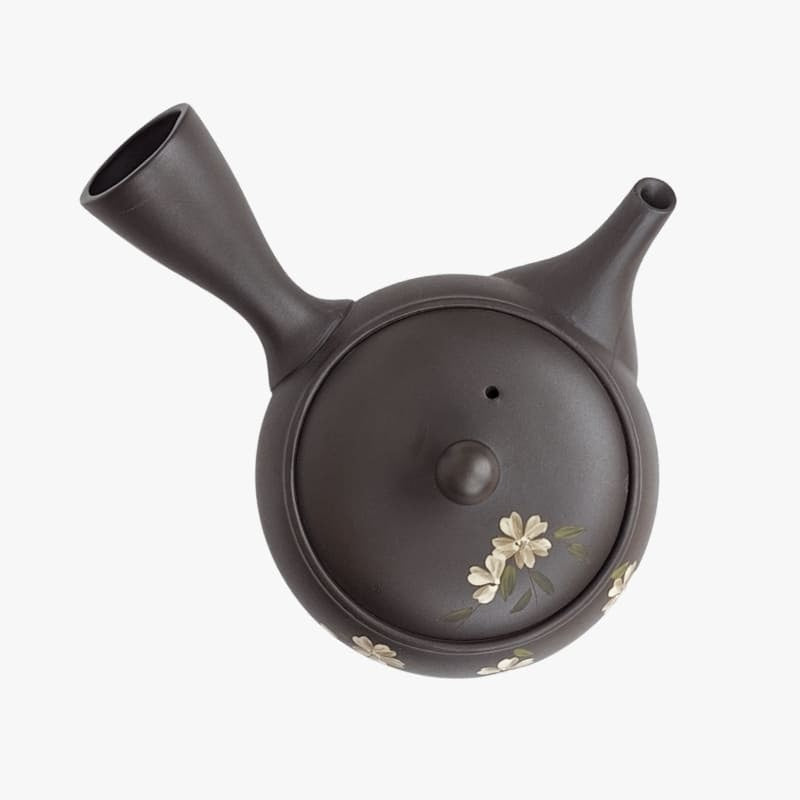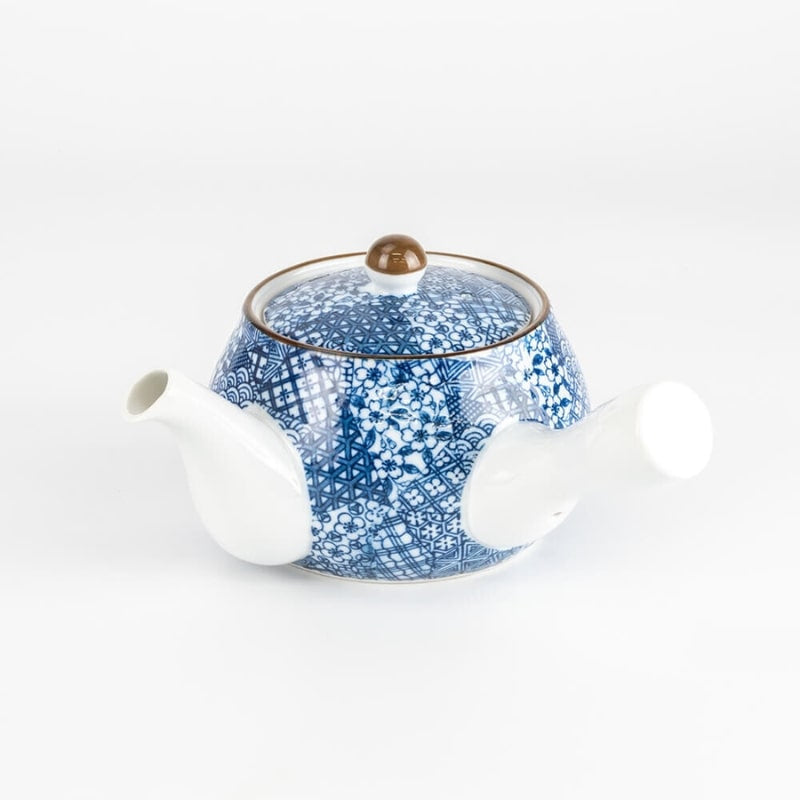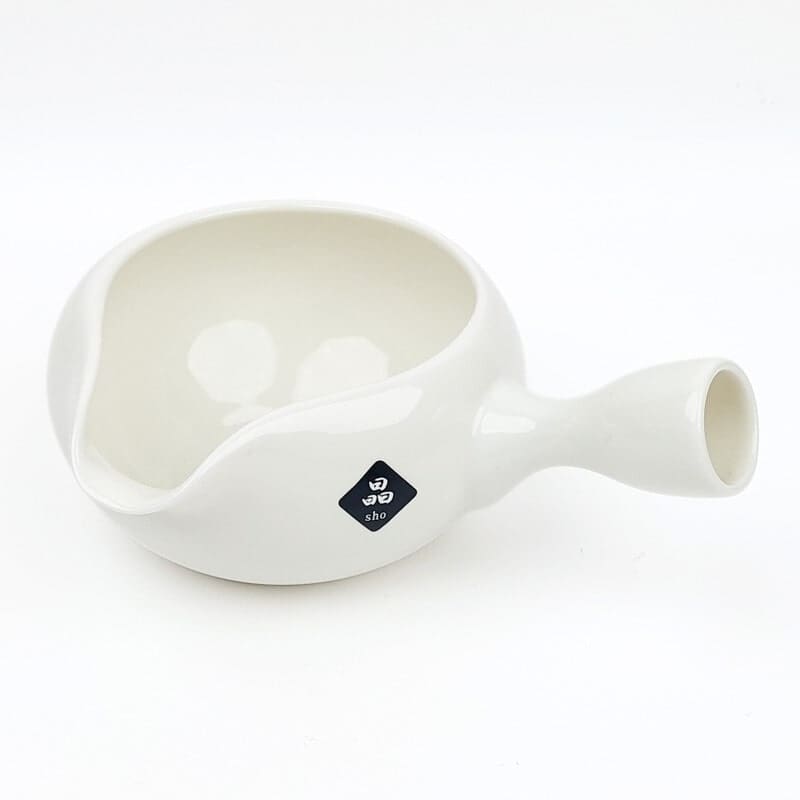Japanese teapot: how to bring out the best of your tea?
Did you know that the taste of tea depends on its preparation? In addition to temperature and infusion time, the choice of the right Japanese teapot is crucial to delivering all the delicate aromas of your tea.
Japanese teapot models
In Japan, there are several types of teapot for different uses.
Kyusu teapots
The traditional Japanese teapot is called Kyusu. Made of clay or terracotta, this ancient handcrafted teapot is designed to deliver all the subtleties of green tea. Two types are available:
- The Yokode kyusu teapot is the most popular. A true Japanese classic, it has a handle on the side perpendicular to the spout, making it easy to pour the beverage.
- The Ushirode Kyusu Japanese ceramic teapot can be identified by the handle on the back. Suitable for both right-handed and left-handed users.
Dobin teapots
Dobin teapots are used for heating water. They feature a handle on the upper part of the teapot, allowing you to grip the pot without burning yourself. Made from clay or porcelain, they are particularly resistant to heat.
Tetsubin teapots
Tetsubin are Japanese cast-iron teapots used for boiling water and infusing teas. The more modern enamelled cast-iron version prevents rust, but cannot be used as a kettle. The Japanese Iwachu cast-iron teapot is renowned for its quality workmanship. Red, green, blue or a more neutral color, this teapot won't go unnoticed!
Individual Japanese teapots
The Hohin kyusu and Shiboridashi are tiny, handleless teapots designed to be held directly in the hand. These models perfectly reproduce the flavors of low-brew teas such as Gyokuro or top-quality Sencha. Do you like Matcha tea? The matcha chawan is an indispensable bowl for its preparation.
How to choose a Japanese teapot?
Material, size, design, filter type, price... There are a number of factors to consider when choosing the right teapot for your needs.
Your tea of choice
Lovers of green tea will prefer a small Japanese teapot such as the Yokode Kyusu or Honin for brewing small quantities. The Ushirode Kyusu model, on the other hand, allows for greater volume. Are you a fan of black teas? Consider a clay or cast-iron teapot, perfect for teas with high infusion temperatures.
Materials used
Cast-iron teapots are the best at retaining heat, but they are also heavier. Strong and durable, most have an enamel coating to prevent rusting.
Clay teapots also retain heat well, and have the power to sublimate the taste of tea, according to devotees of the Tea Ceremony.
Translucent glass teapots are ideal for observing tea infusion. However, they must be carefully washed to maintain their transparency.
Ceramic teapots are easy to care for and resistant to thermal shock. They come in all shapes and sizes, offering a great choice!
Porcelain teapots are particularly appreciated for their elegance. Porcelain does not conduct heat, so there's less risk of burning yourself. However, porcelain is not suitable for all types of tea.
Lastly, porous materials such as clay, terracotta, earthenware and some stoneware retain tea aromas. It is therefore preferable to use a single tea pot for a single type of tea.
Volume
If you're a frequent tea drinker at home, or if you often have guests over for tea, we advise you to opt for a large teapot. Likewise, if you like bulk tea, choose a large pot that's better suited to the development of tea leaves. Medium-sized teapots are ideal for those who drink tea regularly throughout the day. For occasional thirst-quenchers, consider small teapots.
Design
There are cylindrical, round and oval teapots... The shape can influence the infusion and pouring of the water, but it also has an aesthetic role to play. Traditional designs such as cherry blossoms and birds are often found, as well as Japanese shipoh, chu arare or kikko motifs... Preferably choose a design that matches your furniture to create a harmonious ambience.
The filter :
A teapot with a removable infuser allows you to remove tea leaf residues, while a strainer or fixed filter generally leaves more infusion surface. Stainless steel is perfect for maintenance, but some connoisseurs may find that it leaves a taste, unlike a ceramic filter. Finally, small-mesh filters retain tea leaves better, while large-mesh filters infuse better.
How to use a Japanese teapot?
- Boil water.
- Warm and clean the teapot with the boiling water.
- Place the tea in the filter, respecting the recommended quantity according to the type of tea and teapot type.
- Pour in hot water to infuse the tea. Water temperature and infusion time depend on the type of tea chosen.
- Gently pour tea into cups.
- Clean utensils with hot water.
Some teapots can also be used as kettles, so you can also place them directly on the stove or on a hotplate.
And there you go, Japanese teapots no longer hold any secrets for you!




































